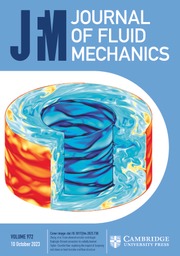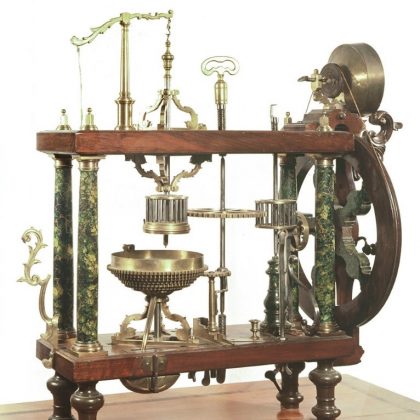Drinking through a straw is difficult (mathematically)
How straws work is no mystery – one end goes in your mouth, the other goes into a fluid, and suction (negative pressure) drives the liquid through the tube. But exactly what happens inside the tube is not simple. For tubes of certain sizes and fluids with specific properties, the flow is easy to model and well understood, but for a wide range of combinations, including everyday examples like drinking through a straw, our best attempts at modelling the flows fall short. In a recent study published in The Journal of Fluid Mechanics, fluid-flow through straw-like systems is explored, and the authors demonstrate why these systems can be so complicated, while also presenting a model that could simplify everything. These results have the potential to inform the way engineers, physiologists, and natural scientists look at flow through pipes and tubes. Moreover, the results represent a useful and educational way of approaching complicated systems bounded by well-understood regimes.

There is a skeleton key that can be used on fluid dynamics problems like these; the Navier-Stokes equation contains all the pieces needed to understand these sorts of systems. The only thing is, the equation can be difficult if not impossible to solve in many cases. Oftentimes, certain aspects of a fluid dynamics problem will be left out or ignored in an attempt to simplify the Navier-Stokes equation. The plot in Figure 1 shows three regimes where the Navier-Stokes equation becomes easy to solve. They correspond to laminar suction (blue), like the smooth, regular pull of fluid through a narrow tube; turbulent suction (red), like water through a fire hose; and inertial slurping (green), like how one might drink from a hot cup of tea. In all three cases, the skeleton key fits easily, and the flows described in these regimes become easy to solve. However, the researchers identified a middleground between these regimes that they likened to drinking through a straw, that becomes incredibly complicated, mathematically. Rather than solve the full equation, the researchers instead combined the three simpler solutions empirically into a single solution that allowed them to glide between regimes and make predictions in the difficult no man’s land of drinking straws. However, this new solution can only ever be an approximate solution to the Navier-Stokes equation – so the researchers developed an experiment to test how well it works.

To test the model, the researchers devised an experiment, shown schematically in Figure 2. The key measurable in the experiment is the average flow rate Q between the fluid supply chamber to the reservoir, which is affected by the geometry of the pipe and the pressure initiating the flow (determined by the difference in height, Δh between the pipe and the fluid level in the supply chamber). The fluids used in the experiments were various water/glycerol mixtures, which allowed the researchers to dictate the fluid’s density and viscosity. 41 different pipes with diameters ranging from 0.1-0.8 cm and lengths between 2-90 cm were used, along with two water/glycerol mixtures. Taking these inputs and experimental results, the researchers can recast them in terms of Reynolds Number Re (which compares the flow speed and dynamics to fluid viscosity), Pipe Aspect Ratio ⍺ = D/L, and Friction Factor fD, which are key parameters determining the nature of the fluid flow through the tube. Doing so allowed the researchers to determine what kind of flow their system is exhibiting (where the system falls on Figure 1) while testing their model’s predicted fD.
The results from the experiment showed that largely, the model works. It was able to predict the average flow rate through tubes of various sizes, including those with geometries similar to everyday drinking straws while also reducing to the expected solutions in the well behaved regimes described above. The authors note however, that these are early results for highly simplified systems. Going forward, they intend on applying their technique to tubes of all sorts of geometries, from twisted and curved tubes, to flexible or rough-walled. They anticipate that their model will not only have utility in describing physiological flows and engineering problems reminiscent of drinking straws, but also in teaching about the limiting cases of the Navier-Stokes equation.

Journal: Journal of Fluid Mechanics
Article: Hydrodynamics of finite-length pipes at intermediate Reynolds numbers
Authors: Olivia Pomerenk, Simon Carrillo Segura, Fangning Cao, Jiajie Wu, and Leif Ristroph







Fluid flow in straws may seem simple, but it’s surprisingly complex. A recent study in The Journal of Fluid Mechanics explores why our models fall short in understanding this process. The study’s insights could revolutionize how engineers and scientists view flow through tubes, impacting various fields. It’s fascinating how something as everyday as sipping through a straw challenges our understanding of fluid dynamics!